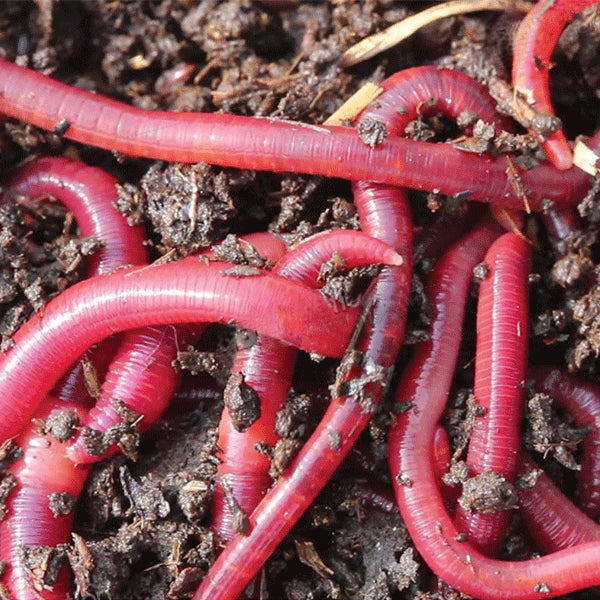Change Your Garden With Red Wigglers: Idea
Red wigglers are not simply an interest for compost fanatics; they are critical agents of makeover for any type of garden. By establishing a standard worm container and comprehending the nutritional requirements of these amazing creatures, garden enthusiasts can dramatically improve soil top quality and plant wellness. The procedure of converting natural waste right into abundant, fertile castings is both uncomplicated and satisfying. The real potential of red wigglers goes past mere composting. Discovering the nuances of their treatment and the varied applications of their byproducts can open even better benefits for your horticulture endeavors.

Benefits of Red Wigglers
Red wigglers, medically called Eisenia fetida, are typically hailed as nature's composting champions. These impressive worms offer several essential advantages that can dramatically enhance garden health and wellness and efficiency. Firstly, they are reliable decomposers, damaging down natural material such as kitchen area scraps and backyard waste right into nutrient-rich vermicompost. This all-natural plant food enriches the soil, advertising healthy and balanced plant development and enhancing soil framework.

One more noteworthy benefit of red wigglers is their ability to reduce waste. By composting organic products that would otherwise add to land fill waste, they play a crucial function in sustainable horticulture techniques. Finally, integrating these worms into your horticulture regimen can lead to increased returns, healthier plants, and a more vivid yard atmosphere, making them vital allies for gardeners seeking to boost their environmental impact.
Establishing a Worm Container
Producing a worm container is a necessary step for any person aiming to harness the advantages of red wigglers in their gardening initiatives. An ideal worm bin can be made from numerous materials, consisting of plastic containers, wooden dog crates, or commercially offered worm bins. The very first factor to consider is size; a container that is at least 2 feet wide, 3 feet long, and 1 foot deep is normally perfect for a tiny to tool number of worms.
Following, make sure proper drain and air flow. Pierce holes in all-time low for excess wetness to leave and in the sides for air movement. It is necessary to produce a bed linens layer, using materials such as shredded paper, cardboard, or coconut coir to give a comfy setting for the worms. The bedding ought to be damp however not soggy, resembling a moist sponge.
Area the container in a location that preserves a constant temperature level, preferably in between 55 ° F and 77 ° F. Avoid direct sunlight or extreme chilly, as these problems can harm the worms. As soon as the bin is established up, enable the bed linens to go for a few days before introducing the red wigglers, ensuring they have a flourishing atmosphere in which to thrive.
Feeding Your Red Wigglers
Once the worm container is established and the red wigglers are introduced, proper feeding ends up being vital to keeping a healthy and balanced worm populace. Red wigglers flourish on a diverse diet, mostly being composed of cooking area scraps and natural products.
When presenting food, slice the scraps into smaller sized items to assist in quicker usage. In addition, bury the food under a layer of bedding product to prevent fruit flies and various other nuisances. Screen the feeding frequency; a basic guideline is to provide food every 1-2 weeks, relying on the variety of worms and the quantity of food waste generated.

Harvesting Worm Castings
Just how can you inform when it's time to gather worm castings from your container? The preparedness of worm castings is indicated by a couple of crucial indicators.
An additional indicator is the reduction in worm activity; as the castings gather, worms often tend to migrate towards fresher food resources. If you observe a decline in worm activity and the existence of spreadings at the base of the bin, it's a clear signal that harvesting schedules.
To gather, delicately dig the spreadings, making sure to lessen disturbance to the worms. A preferred method entails separating the castings using light; worms often tend to tunnel far from the light, permitting you to accumulate the castings extra quickly.
Collecting regularly, around every 3 to six months, ensures a continual supply of this nutrient-rich modification for your horticulture endeavors. Keep in mind, the quality of your castings straight impacts the health and wellness of your plants.
Making Use Of Castings in Your Garden
(eisenia fetida for sale)Making use of worm castings in your yard can i thought about this dramatically improve dirt health and wellness and plant growth - red worms. These nutrient-rich natural plant foods give necessary macro and trace elements, boosting the overall fertility of your soil. By including worm castings right into your garden beds, you can advertise useful microbial task, which assists in vitamins and mineral schedule and boosts dirt structure
To use worm spreadings efficiently, blend them into the leading couple of inches of soil prior to planting. This guarantees that nutrients are easily easily accessible to your plants. You can create a nutrient-dense liquid plant food by steeping worm spreadings in water for a week, after that applying the resulting "worm tea" straight to your plants. This approach not only supplies prompt nutrients but likewise urges healthy root growth.
Worm spreadings additionally improve moisture retention within the soil, lowering the demand for constant watering. Routinely incorporating worm castings right into your gardening regimen can lead to durable plant growth, boosted yields, and a general healthier garden ecological community.
Final Thought
By establishing a worm container, providing ideal food, and frequently gathering nutrient-rich castings, gardeners can promote a lasting ecosystem. The usage of worm spreadings and "worm tea" better adds to moisture retention and nutrient availability in the soil.